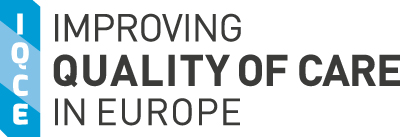
The role of technology and social media use on sleep-onset difficulties among Italian adolescents
28 October 2020
"The role of technology and social media use on sleep-onset difficulties among Italian adolescents: a cross-sectional study" by Nirosha Elsem Varghese, Eugenio Santoro, Alessandra Lugo, Juan J. Madrid-Valero, Simone Ghislandi, Aleksandra Torbica, and Silvano Gallus.
Background:
The use of technology and social media among adolescents are an increasingly prevalent phenomenon. However, there is a paucity of evidence on the relationship between frequency of the use of electronic devices and social media and sleep-onset difficulties among the Italian population.
Objective:
The aim of this study is to investigate the association between the use of technology and social media, including Facebook and YouTube, and sleep-onset difficulties among adolescents from Lombardy, the most populous region in Italy.
Methods:
The relationship between use of technology and social media, and sleep-onset difficulties was investigated. Data came from the 2013-2014 wave of the Health Behavior in School-aged Children (HBSC) survey, a school-based cross-sectional study conducted on 3172 adolescents aged 11 to 15 years in Northern Italy. Information was collected on difficulties in falling asleep over the last 6 months. We estimated the odds ratios (OR) for sleep-onset difficulties and corresponding 95% confidence intervals (CI), using logistic regression models after adjustment for major potential confounders.
Results:
The percentage of adolescents with sleep-onset difficulties were 34.3% overall, 29.7% in boys and 39.2% in girls. It was 30.3% in 11yo, 36.2% in 13yo and 37.3% in 15yo adolescents. Sleep onset difficulties were more frequent among adolescents with higher use of electronic device: for general use (OR for highest vs lowest tertile of use= 1.50; 95% CI: 1.21-1.85); use for playing games (OR= 1.35; 95% CI: 1.11-1.64); use of online social network (OR for always vs never or rarely= 1.40; 95% CI: 1.09-1.81); and YouTube (OR= 2.00; 95% CI: 1.50-2.66).
Conclusions:
This study adds novel information about the relationship between sleep-onset difficulties and technology and social media in a representative sample of school-aged children from a geographical location that has not been included in studies of this type previously. Exposure to screen-based devices and online social media is significantly associated with adolescent sleep onset-difficulties. Interventions to create a well-coordinated parent and school centered strategy, thereby increasing awareness on the unfavorable effect of evolving technologies on sleep among adolescents are needed.
